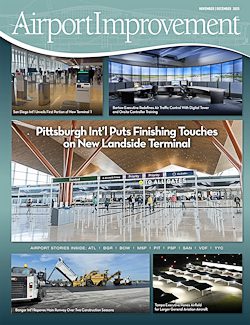Full-year statistics show total passengers exceeded seven million in 2018
MILWAUKEE (January 29, 2019) – Local passenger traffic at Milwaukee Mitchell International Airport broke seven million for just the third time in the Airport’s history, rising nearly three percent in 2018, compared to the previous year.
A total of 7,097,627 passengers chose MKE in 2018, compared to 6,904,670 during 2017, representing an increase of 2.8%.
Local passengers, which includes all passengers except those transferring between flights, totaled 7,014,551 in 2018.
“Local passengers, a key industry metric, exceeded seven million for just the third time in the Airport’s history,” County Executive Chris Abele said. “Our low airfares, affordable parking, and easy travel experience continue to be a big draw for passengers from throughout Wisconsin and northern Illinois.”
“Our airline partners have added seats to great destinations like Boston, New York, and Seattle, while new destinations like Salt Lake City, Houston-Hobby and Dallas-Love were added to our route map in the last year,” Airport Director Brian Dranzik added. “This sustained passenger growth reflects the stability of the big four U.S. carriers and the competitive nature of the Milwaukee air travel market.”
Airlines filled 81.8% of their seats at MKE in 2018, up from 80.7% in 2017.
MKE currently offers nonstop flights to 40+ destinations coast-to-coast, and 160 international destinations are available from Milwaukee with just one connection. MKE is served by Air Canada, Alaska, Allegiant, American, Delta, Frontier, Southwest, United, and Volaris. The complete list of nonstop cities can be found at mitchellairport.com.
Milwaukee Mitchell International Airport is owned by Milwaukee County and operated by the Department of Transportation, Airport Division, under the policy direction of the Milwaukee County Executive and the County Board of Supervisors. The Airport is entirely funded by user fees; no property tax dollars are used for the Airport’s capital improvements or for its day-to-day operation.


